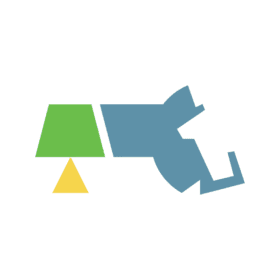November 19, 2020 Community Stories
Changing Communities and Perspectives Through Art
Paint is a secret ingredient and under-rated tool for transforming neighborhoods. That’s the idea behind Common Wealth Murals (CWM), a nonprofit working to generate more public art in Springfield. The Community Foundation has supported the organization since its inception.
Creating a mural on the side of a garage, a homeless shelter, or a store does more than bring a touch of beauty to city life. It can be an economic engine for the revitalization of a neighborhood. It can spark conversations about public issues. It can make people feel safer walking down the street and more welcome in their communities.

The power of murals motivated Britt Ruhe to found CWM in 2018, with the financial support of the city of Springfield, the Community Foundation, individual donors, and local corporations.
“Art is a powerful way to help people think and feel and connect with themselves and each other,” Ruhe says. “It’s where intellect and emotions meet. But most people don’t go to museums or galleries. Murals bring art into people’s lives at a large scale and in a way that it’s really easy to engage with.”
CWM focuses on creating murals with many opportunities for community members to engage — by viewing, contributing ideas, helping paint, and learning specialized mural-making techniques.
Over ten days in June 2019, CWM’s first annual festival, Fresh Paint Springfield, involved professional muralists and community members in creating 10 large murals and a series of smaller murals that covered 20,000 square feet of city walls. For one, an artist created a design on canvas which was then painted in with the help of 600 community members. The special fabric was then permanently applied to a wall.
The festival’s impact was quantified through a study done in partnership with the University of Massachusetts. “We were able to document shifts in perceptions of downtown Springfield in the eyes of local people and those from out of town. People saw downtown as safer, more accessible for walking and shopping, and more inclusive and welcoming.”
Murals also spark important conversations. After CWM joined a coalition of community members to paint the words Black Lives Matter on the street in front of City Hall, that mural was vandalized multiple times. A local business owner offered a side of his building as the spot for a replacement mural, and CWM helped organize local artists to paint each of the letters, expressing their own interpretation of the phrase and what it represents.
Objections to one letter in the mural came in, including one from the family member of a police officer who had been killed in the line of duty. Rather than shutting down the conversation, the coalition opened it up with an online discussion that included the family member, the artist and many others from the community
“They had a wonderful exchange,” says Ruhe. The family member and the artist discussed symbols and their differing interpretations, the role of art in exploring complex issues, and the feelings aroused by current events.
“This is why I love art. It brings people together in heartfelt conversation, people who might never have spoken to each other. The reaction to that mural is more evidence that art matters.”
